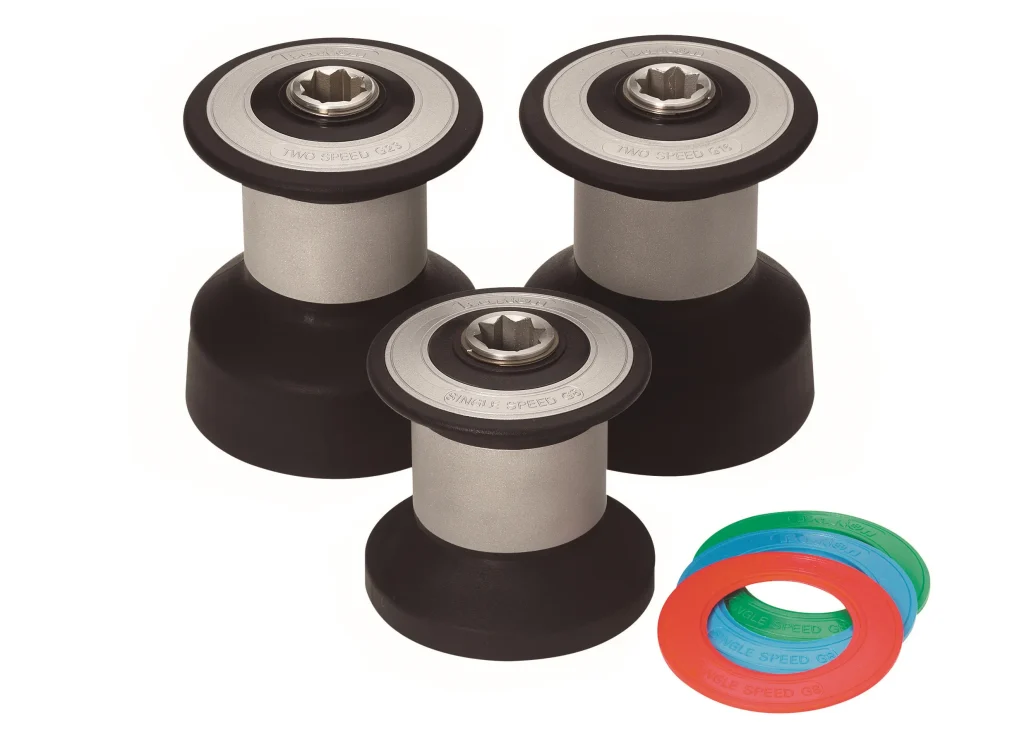Winches make handling large loads through halyards, sheets and control lines far, far easier than the alternative of hauling them in by hand. Taking the strain of the huge loads generated by wind filled sails and massively reducing the physical effort required when handling them. When it comes to fine trimming of sails for maximum performance, using a winch makes light work of it, allowing the crew to focus on constant minute sail adjustments rather than just getting their breath back.
Winches work through friction, gripping the line firmly with every turn applied around the winch drum. Adding multiple turns on a winch is referred to as ‘stacking’ the winch. A simple winch often requires two people to operate it, as one winds the winch and the second pulls away the loose end of the rope, known as ‘tailing’ it.
Barton Winches are made of advanced composite materials meaning considerable weight and cost savings are gained over their comparable aluminium alternatives. They require minimal maintenance being virtually self-lubricating, friction free and corrosion resistant whilst providing excellent performance and consistent reliability. Three versions are available and include a single speed 8:1, a twin speed 16:1 and a mighty twin speed 23:1. The range is suitable as primary winches on yachts up to 10m / 30ft or as spinnaker/halyard winches on larger vessels.
A smaller dinghy and dayboat winch is also available from Barton. The Snubber Winch is lightweight, being made from glass fibre reinforced nylon with anodized aluminium ribs for longevity. They are designed to do the same job as their larger counterparts, but for smaller rope diameters holding lower load levels.
Self-Tailing winches have jaws at the top of the winch drum which take the stacked line and grip it as the winch is cranked, feeding the excess line away from the drum. This means the winch can be operated by one person making short-handed sailing easier and whilst racing, allows crew to concentrate on other tasks.
The incredibly clever Wincher is a rubber moulding which fits over the top of any standard winch and converts it into a self-tailing version of itself. It works using friction. As lines are stacked up the winch drum under load, the top turn is gripped by the underside of the Wincher firmly holding it in place. The drum must be fully stacked for the Wincher to work. The line is then solidly cleated off by locking it into the Wincher’s ridged central groove, neatly making any winch a self-tailing version. Four sizes are available for drums of between 64-100mm / 2.52-3.94 inches diameter and maximum rope diameters of 8-16mm / 0.31 – 0.63 inches depending on the version used. The Wincher provides unbeatable value in making sailing simpler and more fun for everyone.
To discover fact sheets, fitting instructions and more technical information about the range of winches click here.


